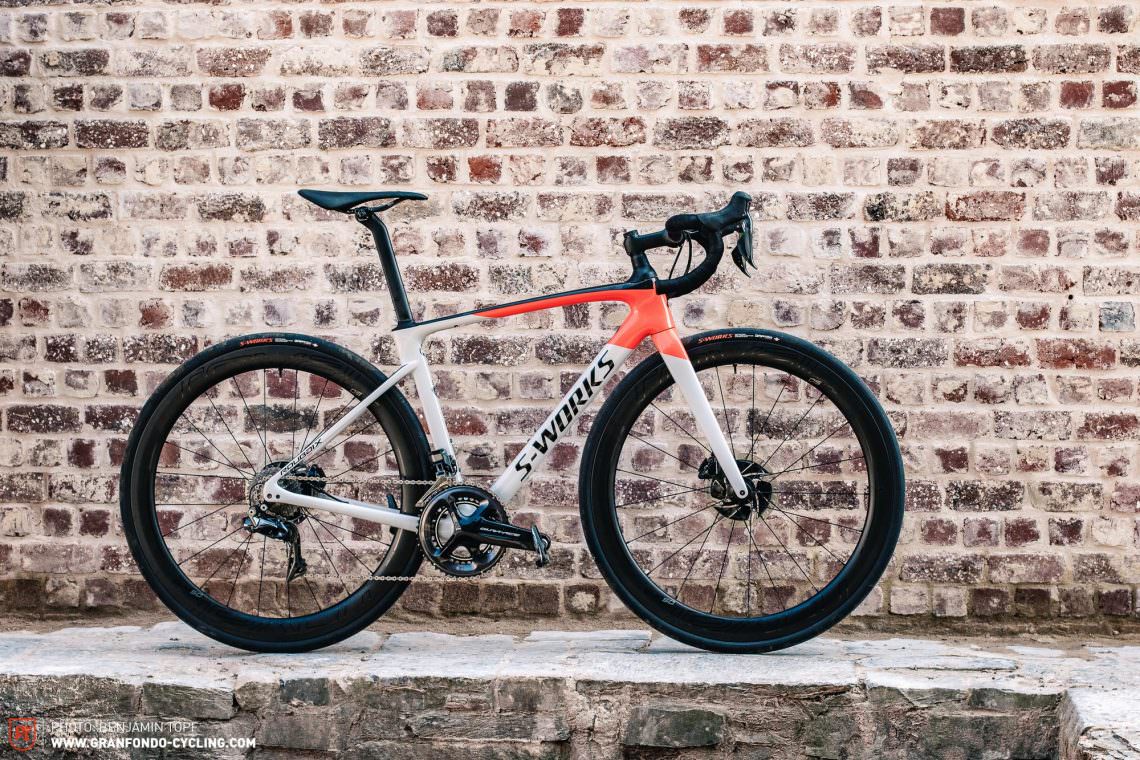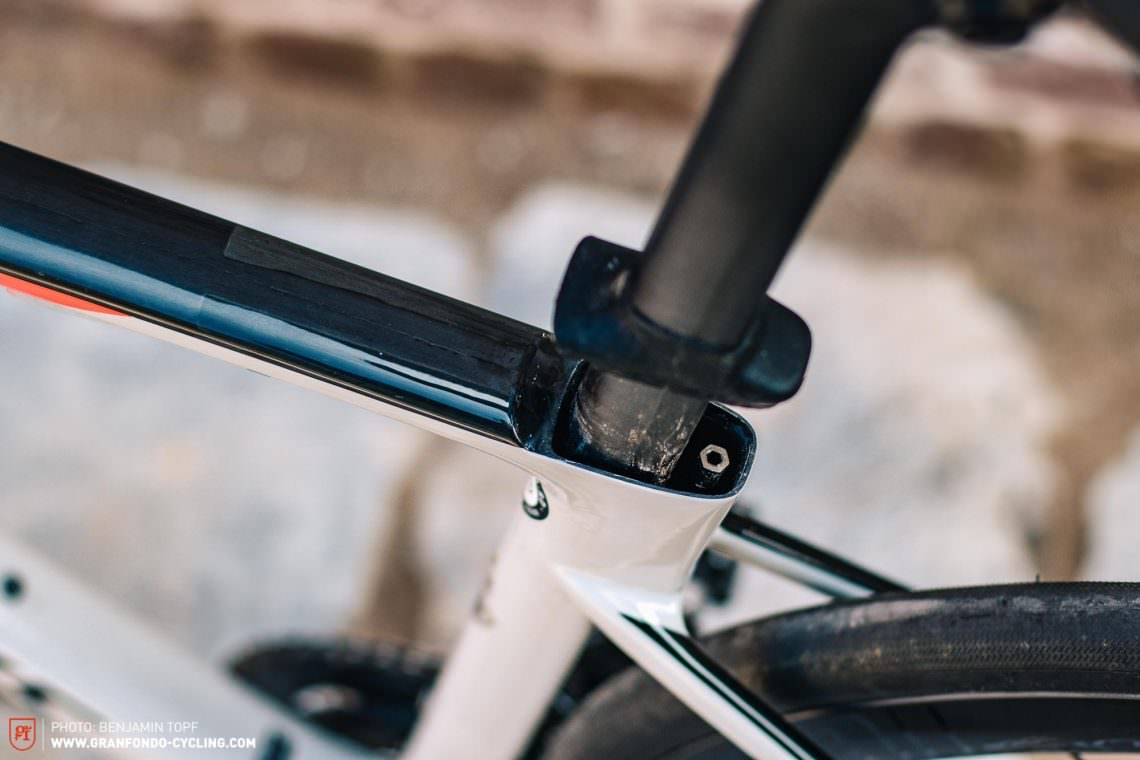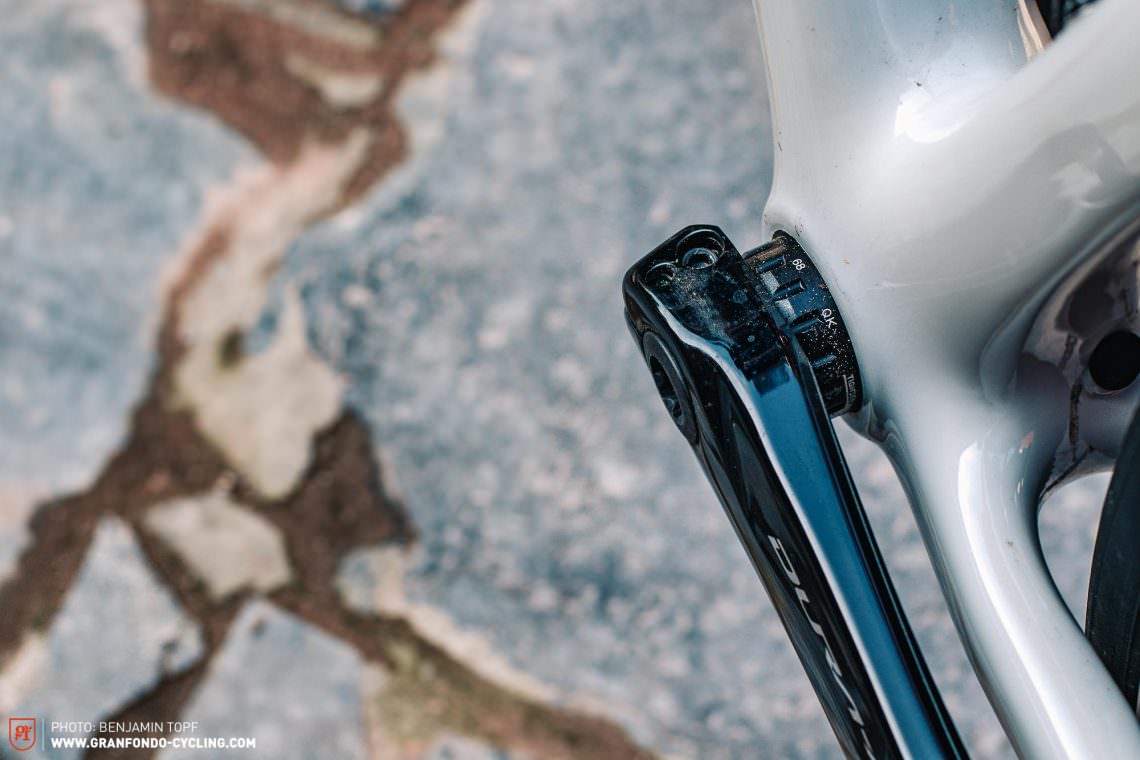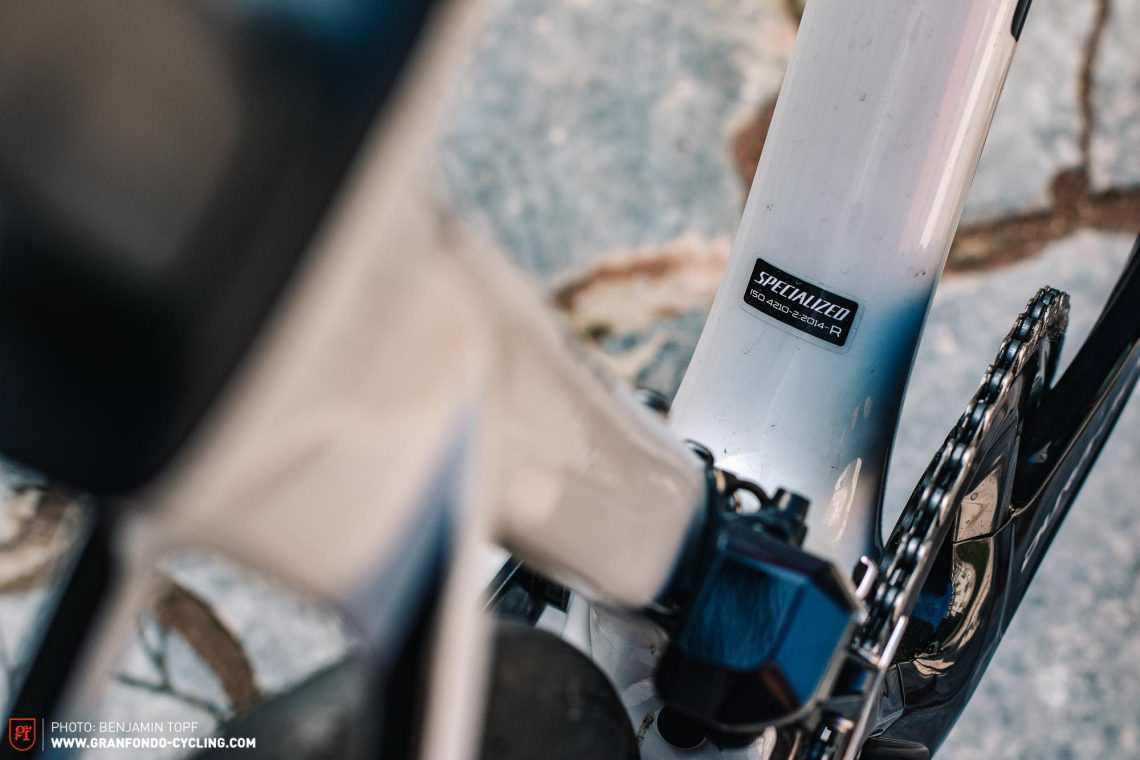With the announcement of the brand new 2020 Roubaix, Specialized are releasing the fourth generation of their endurance road bike to take on the toughest one-day race of the year: Paris-Roubaix. What is the new Future Shock 2.0 system capable of, what does company founder Mike Sinyard have to say about it and what does the new bike have to do with the battle of the sexes?
The brand new Specialized Roubaix is full of Silicon Valley tech: it’s said to be lighter than the 2019 Venge and more aerodynamic than the S-Works Tarmac SL6. The icing on the cake is the revised Future Shock system, making it what Specialized claim is the most advanced road bike.

According to the philosophy they’ve been following for 15 years now – “smoother is faster” – Specialized not only aim to make their bikes faster through aerodynamic and weight optimisation but also by increasing rider comfort. They seem to be onto something: bikes developed on this principle have already been on the top step of the Paris-Roubaix’s podium six times. The new Roubaix promises not only to live up to the expectations set by its predecessors but to improve control and take rider confidence to the next level.
According to Specialized, there are many ways to make bikes more comfortable, but not all of them are suitable for road bikes. On most road bikes, for example, you’ve got a fork that flexes to absorb impacts. While this is the easiest way to make the front end more comfortable, it does have one major drawback: after you hit an obstacle, the fork then moves back to the starting position, and thus against the direction of travel, which is bad for efficiency and speed.

The benefits of suspension forks as you get them on mountain bikes have the disadvantage that they bob up and down when pedalling, again robbing the bike of efficiency. In order to prevent this, Specialized often use their specially developed Brain system that automatically locks out the forks on their XC mountain bikes. On a MTB, the volume of the tires easily compensates for a locked out fork. On a road bike, however, the speeds are higher and the volume of the tires is much lower. By the time the fork unlocks, you’d already be over the obstacle.
So how do you make a road bike more comfortable and thereby faster? Specialized’s answer to this question is the Future Shock 2.0 damping system.
The Specialized Roubaix in detail: Future Shock 2.0 and other highlights
The predecessor of the 2020 Roubaix already featured Specialized’s so-called Future Shock system. This suspension system is supposed to decouple the cockpit from the fork, which is a completely different concept compared to a mountain bike suspension fork. In other words, it’s a kind of spring in the steerer tube, positioned above the frame. But what exactly is the advantage of the 2.0 version compared the previous system, as we’ve come to know on the “old” Roubaix and the Diverge? The engineers from Morgan Hill seem to have taken a close look at our latest review, as the new Future Shock now features a hydraulic damper. This allows you to regulate the speed at which the system compresses and rebounds, which increases rider control and allows you to adjust the shock to personal preferences. A scale on the headset cap shows the current setting of the damper. Like its predecessor, the system offers axial compliance of 20 mm. According to Specialized, they paid particular attention to aesthetics when designing the Future Shock 2.0. Small spoiler at this point: the look has improved significantly compared to its predecessor!

Thank god there are people who didn’t skip science class. – Mike Sinyard
To make the rear end of the Roubaix as comfortable as the front, they’re using a new carbon seat post. The D-shaped Pavé seat post is the first compliant aero seat post Specialized have made. Its compliance is evenly distributed over the full length of it and promises to work even better because of the low position of the seat post clamp in the frame. The seat post clamp is about 65 mm below the top of the seat tube and besides improving comfort by adding compliance to the seat post, it supposedly also optimises the bike’s aerodynamics. The good news is: the Pavé seat post comes as standard on all of the new models, not just for the top-of-the-range.

As with the 2019 Venge, in developing the frame, Specialized’s designers relied on their so-called Free Foil library – a proprietary library of tube shapes designed to optimally balance comfort, aerodynamics and weight. By doing so, Specialized claim to have been able to keep the weight of size 56 frame at just under 900 g.
The engineers also stuck with their so-called Rider-First engineering concept: by doing so, the different frame sizes are designed in such a way that riders of different weights can enjoy the same frame stiffness and a similar level of comfort. This concept is based on the hypothesis that larger riders are generally heavier. An assumption that can often be true but doesn’t always have to be.

Another highlight is the return of a threaded bottom bracket to the Roubaix.
Specialized Roubaix: Beyond Gender
Many of Specialized’s customers or prospective buyers will already be somewhat familiar with the American brand’s own fitting system: Retül. The data collected from these bike fittings have been the basis for recent studies that have shown Specialized’s designers one thing above all: there are probably more differences between two male cyclists than between male and female riders. Gender alone doesn’t provide nearly enough data. As a result, Specialized have dismissed model segregation according to male and female as arbitrary and obsolete. So there will be only one product range available from Specialized, but with more available sizes.
Our Roubaix is no longer just for men – the races shouldn’t be either! – Mike Sinyard

Specialized Roubaix: sizes and geometry
Overall, the Roubaix will be available in eleven sizes. All models will be available from sizes 44 to 64 and the flagship S-Works team models will additionally be available in sizes 53, 57 and 59. The sizing of these team models is adjusted to the needs of the pro teams in terms of stack height and reach and therefore only available with the top-end models.
| Size | 44 | 49 | 52 | 54 | 56 | 58 | 61 | 64 |
|---|---|---|---|---|---|---|---|---|
| Seat tube | 410 mm | 410 mm | 446 mm | 465 mm | 485 mm | 505 mm | 547 mm | 568 mm |
| Top tube | 512 mm | 525 mm | 533 mm | 545 mm | 563 mm | 579 mm | 595 mm | 609 mm |
| Head tube | 90 mm | 100 mm | 112 mm | 125 mm | 143 mm | 170 mm | 205 mm | 215 mm |
| Head angle | 70.0° | 71.5° | 72.0° | 72.8° | 73.5° | 73.5 | 74.0 | 74.0 |
| Head angle | 74.0° | 74.0° | 74.0° | 74.0° | 73.5° | 73.5° | 73.5° | 73.0° |
| Chainstay | 413 mm | 413 mm | 413 mm | 415 mm | 415 mm | 418 mm | 418 mm | 418 mm |
| BB Height | 265 mm | 265 mm | 265 mm | 266 mm | 266 mm | 268 mm | 268 mm | 268 mm |
| Wheel base | 981 mm | 982 mm | 986 mm | 988 mm | 995 mm | 1,014 mm | 1,024 mm | 1,033 mm |
| Reach | 353 mm | 363 mm | 368 mm | 376 mm | 384 mm | 392 mm | 389 mm | 404 mm |
| Stack | 540 mm | 555 mm | 570 mm | 585 mm | 605 mm | 630 mm | 665 mm | 675 mm |
Apart from that, the geometry of the new Roubaix is very similar to that of its predecessor. Specialized have increased tire clearance, guaranteeing enough room for tires up to 33 mm wide.
| Größe | 53 | 57 | 59 |
|---|---|---|---|
| Sattelrohr | 465 mm | 485 mm | 534 mm |
| Top tube | 541 mm | 562 mm | 581 mm |
| Head tube | 90 mm | 110 mm | 125 mm |
| Head angle | 72.8° | 73.5° | 74.0° |
| Head angle | 74.0° | 73.5° | 73.5° |
| Chainstay | 415 mm | 415 mm | 418 mm |
| BB Height | 266 mm | 266 mm | 268 mm |
| Wheel base | 983 mm | 994 mm | 1,012 mm |
| Reach | 381 mm | 392 mm | 407 mm |
| Stack | 552 mm | 574 mm | 588 mm |







